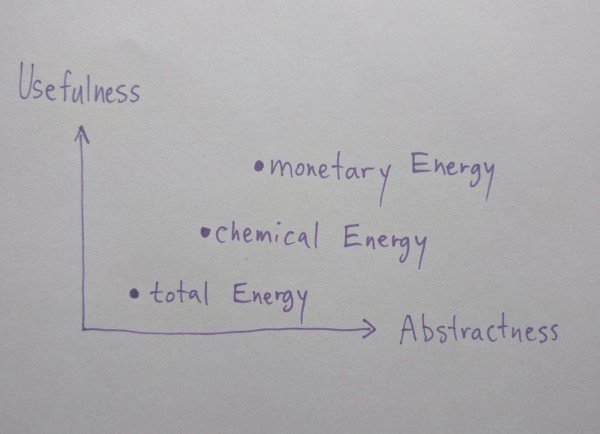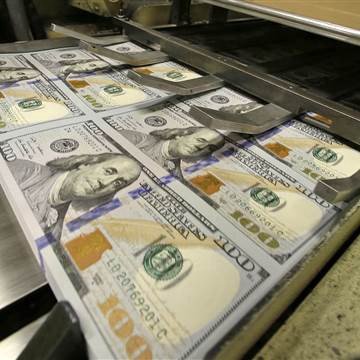A Physicist’s Perspective on Bitcoin
Money is a type of energy, and thinking about it as such brings attention to the different ways that different moneys are created. Moneys created in a work-free process result in a parasitic relationship between the creators (parasites) and holders (hosts.)
In physics, the definition of “energy” is “that which allows work to be done,” and work is the moving of a mass by a force. Money can be used to do work by paying people to move stuff. We pay people to cut lawns, stitch clothes, rub backs, etc. Money is energy. As there is nuclear energy in a hydrogen atom, gravitational energy in water behind a dam, and chemical energy in a banana, there is monetary energy in a five dollar bill.
Total energy was elegantly expressed by Einstein as mc^2. Despite the simple definition, the ability to harness total energy to do useful work is complex and difficult, often requiring splitting or fusing atoms.
Chemical energy is stored in the bonds of atoms and molecules. It harder to define because depends on what chemical reaction occurs, as well as temperature, pressure, and volume. Despite its greater abstractness, chemical energy is more useful for doing useful work. Gasoline is easily harnessed in internal combustion engines.

Monetary energy is even harder to define than chemical energy, and can be even more useful. Any thing that can be traded for a good or service has monetary energy. This includes legacy money, phone credits, a bicycle, and a pig. The value of a thing’s monetary energy depends on numerous factors: the qualities of the thing (i.e. age, shininess, usefulness, scarcity, wideness of acceptance (i.e. liquidity), integrity); human psychology (e.g. fear and greed); political conditions (e.g. the strength of property laws and the rate of capital gains tax); and time and place. As for the later, the value of energy in ounce of gold has generally increased over time and the value of energy in a Kenyan shilling is probably near-zero in Mongolia.
Monetary energy is fuzzy and abstract compared to other types of energy, but this does not negate that monetary energy is, indeed, energy.
The law of conservation of energy states that energy can neither be created nor destroyed; rather, it transforms. New energy is not created when a new $100 bill is printed. Yet new bills have value equal to that of any old bills (today, not at their respective times of creation.) This is a conundrum because it invites the question: “From where does the monetary energy contained in new bills come from?”

As far as we know, the energy does not come from the creation process. Electronic dollars are created on centralized databases by simply typing commands on a computer. Paper bills are mass produced in a relatively easy process. (The cost of identifying and prosecuting counterfeiters notwithstanding.) The exception to easy money is the American penny, which has a creation cost of $0.017 due to the cost of raw materials.
We know that monetary energy is a function of scarcity, so the logical explanation is that when new dollars are created, monetary energy exits pre-existing dollars and enters new dollars. This theory fits with empirical evidence of rising of prices for labour: a typical starting wage in the United States in 1938 was $0.25/hour vs $8.00/hour today
.From here, it’s tempting to make a moral argument against new dollar creation based on the premise that people are equals and no person should be able to unilaterally take energy from another person, (which, in case you missed it, is the side-effect of the dollar-creation process.)
However, I believe the stronger argument leans on self-interest. Unless you are one of the authorities that creates new dollars (or euros or yen…) then you are not one of those authorities! And if you have any dollars to your name, then you are being robbed of energy.
In biology, the term for an organism that takes energy from another organism is “parasite.” If you have any dollars to your name then you are a host, and the authorities who create new dollars are parasites feeding on your monetary energy.
Fortunately, Satoshi and the giants on whose shoulders he stood, have created an anti-parasitic medicine: bitcoin.
Bitcoin contrasts with dollars because its creation process requires work. The necessary inputs to create bitcoin are a computer, electrical energy, and an internet connection. This means the market is open and competitive. Economic theory suggests that the profit margins of such a market approach zero.
The theory is strengthened by the empirical evidence of bitcoin mining operations regularly shutting down. If the electrical energy in equals the monetary energy out, then bitcoin holders should be relieved to conclude that, unlike dollars, the creation of new bitcoin is not a parasitic activity.
People have a near-universal desire to store monetary energy for the future: for their retirement, and for their children’s education. People don’t want to support parasites. Therefore, I expect more and more people to transfer their monetary energy from dollars and euros to bitcoin. Increased demand will funnel more and more monetary energy into each and every bitcoin. Today, one bitcoin is worth approximately 6000 kWh (kilowatt-hours) of electrical energy. In the near future, after 7 billion people have transferred monetary energy into 21 million bitcoins, the energy in a single bitcoin will be enormous.
Thanks for reading!
Decentralizing the ability to control monetary energy allows the hosts to collect in trade for their monetary energy at an equitable rate. This is an interesting perspective on economics.